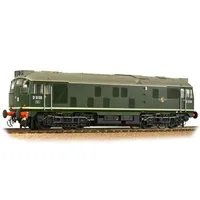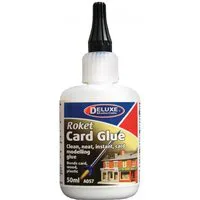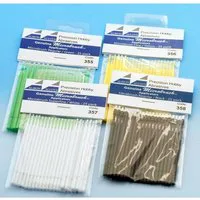Branchline Class 24/1 D5135 BR Green (Late Crest) Sound Fitted OO Gauge
Class 24/1 D5135 BR Green (Late Crest) Sound Fitted OO Gauge MODEL FEATURES: Bachmann Branchline OO Scale Era 5 Pristine BR Green (Late Crest) Livery Headcodes 1L23 and 3H80 Accessory Pack NEM Coupling Pockets Sprung Buffers Detailed and Decorated Cab Interior Directional Lighting Interior Cab Lighting (*when used on DCC) Illuminated Headcode Boxes Lighting can be controlled by chassis-mounted switches or via DCC SOUND FITTED – See below for function list Length 210mm (over couplings) SOUNDS F0 – Directional Lights – On/Off (plus Light Switch Sound) F1 – Warm Engine Start-up / Shut-down (With F8 On – Cold Engine Start-up) F2 – Brake F3 – Single Horn (Speed Related) F4 – Two-Tone Horn (Speed Related) F5 – On – Light Engine / Off – Heavy train F6 – Engine Idle / Coasting F7 – Speed Lock F8 – Cold Start (engage F8 before F1) F9 – Flange Squeal (Speed Related) F10 – Despatch Whistle F11 – Buffer Up F12 – Coupling F13 – Compressor F14 – Cooler Group Fan F15 – Detonators F16 – Combined Pump F17 – Auto Wagon Buffering F18 – On – Driver’s Door Open / Off – Driver’s Door Close F19 – Fade All Sounds F20 – No. 1 End (Fan) Directional Lights Off F21 – No. 2 End (non-Fan) Directional Lights Off F22 – Cab Light On/Off F23 – Window Wipers F24 – Station Ambience F25 – Spirax Valves F26 – Shunting Mode F27 – Volume Down F28 – Volume Up Analogue Users: Please note that normal load running sounds and any other automatic or randomised sounds will also operate when this model is used on analogue control (DC) straight from the box! CLASS 24/1 HISTORY The Class 24/1 locomotives were a development of the BR Sulzer Type 2 design (later Class 24/0), which had been first introduced in 1958. Built at BR’s Derby Works from 1960, the Class 24/1 diesel-electric locomotives were produced in various batches until 1961, with a total of 151 Class 24 locomotives produced by the BR workshops over this period. The batch of locomotives numbered D5133-D5150 (latterly Nos. 24133-24150), upon which this model is based, were fitted from new with a four-character train indicator headcode box above each cab and they were delivered new to the London Midland Region and North Eastern Region, where they were used as mixed traffic engines, replacing steam locomotives. Like all Class 24s, they were powered by the reliable 6LDA28-A Sulzer engine which gave an output of 1,160bhp. The design incorporated some electrical changes from the Class 24/0s, along with a reduced fuel and water tank capacity resulting in a reduction in weight, giving the locomotives a better availability. In later years, the former North Eastern batch of locomotives were sent to Scotland for use in the Edinburgh/Glasgow areas. With a lifespan of up to 18 years, these small and versatile locomotives gave excellent service in all manner of roles on both branch line and main line duties, either singly or working in multiple. Withdrawal from service began in 1968, with the final locomotive No. 24133 being retired in March 1978.





